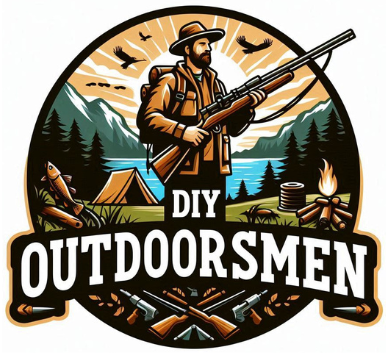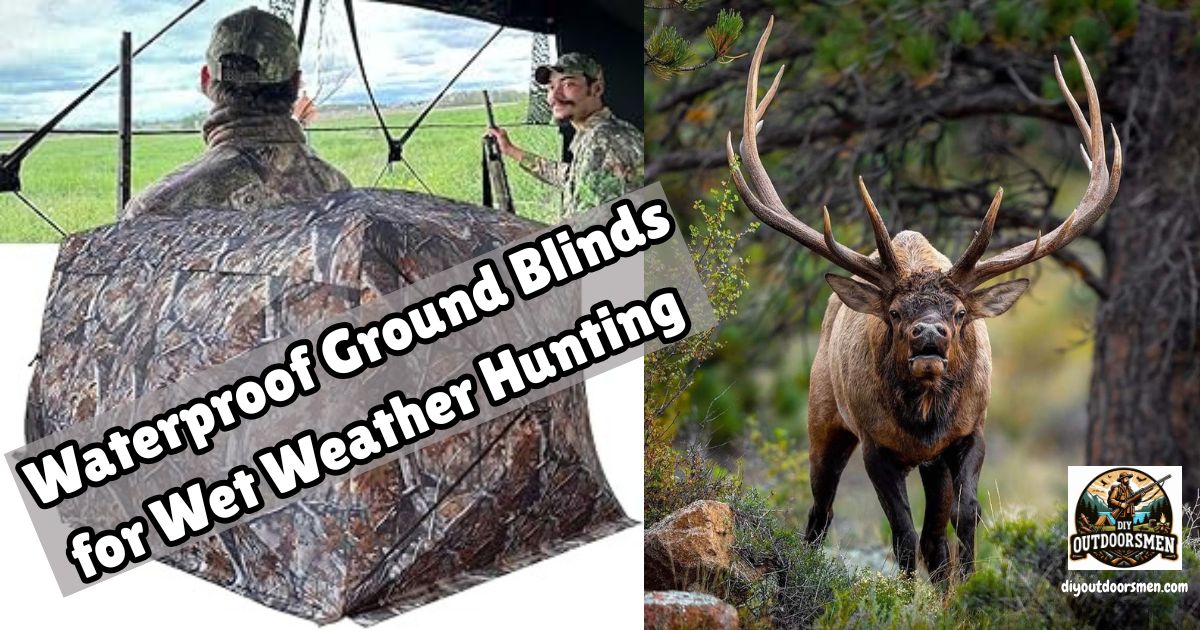Contents
- 1 Why Waterproof Ground Blinds Matter for Elk Hunting
- 2 Top Hardsided Waterproof Ground Blinds for Wet Conditions
- 3 Best Waterproof Ground Blinds for Elk Hunters
- 4 Key Things to Look for in Waterproof Ground Blinds
- 5 Overcoming Common Challenges When Using Ground Blinds in Wet Weather
- 6 Real World Use: Waterproof Ground Blinds in Action
- 7 Frequently Asked Questions
- 8 Getting the Most From Your Waterproof Elk Hunting Blind
Hunting elk in constantly wet conditions takes planning, patience, and the right kind of gear. One of the most overlooked items are waterproof ground blinds. Staying dry is about more than just comfort—it can also make the difference between a successful hunt and spending the day shivering and distracted. In this article, I’m focusing on what you need to know when picking waterproof ground blinds for elk hunting in the rain or snow.
QUICK LOOK: Key Features of Waterproof Ground Blinds
- Material Quality: I always go for high-denier fabric (300D or 600D) or HDPE/fiberglass in hardsided blinds. Thin or untreated fabrics don’t hold up to ongoing moisture or cold, and can start leaking quickly.
- Seams and Zippers: Sealed, covered seams and protected zippers block water entry. On fabric blinds, I check for tape or seam guards to keep rain out. Robust, rust-proof zippers last longer, especially after wet trips, where cheap ones can start rusting right away.
- Ventilation: A little ventilation is really important for wet climates. If not, my gear and clothes end up clammy and uncomfortable. Mesh windows or adjustable flaps help with airflow so the inside stays comfortable without giving away my scent.
- Ground Skirt: Skirts that lie flat or anchor with stakes keep water from running inside. Some even let me pile brush or snow on the outside edge for extra protection against runoff.
- Ease of Setup: When it’s raining, spending less time setting up counts. Compact pop-up designs or easylatch panels get me undercover quickly and help avoid getting soaked during the quick setup process.
- Quiet Operation: Wet weather makes elk nervous, so zippers, doors, and windows that open quietly are super important for close-range shots. Velcro is usually too loud, so zipperless or magnet designs are my preference for keeping things quiet.
Why Waterproof Ground Blinds Matter for Elk Hunting
Elk hunting in rainy, damp, or snowy areas brings extra challenges. Besides keeping myself comfortable, I have to think about keeping my equipment dry, reducing scent, and staying as invisible as possible to wary elk. A waterproof ground blind gives me a weatherproof hide and support for long sits during unpredictable weather.
You can now find waterproof and water-resistant blinds in both hardsided and fabric styles. Both work in wet areas, but each comes with real-world pros and cons. Knowing when and why I reach for each helps me make the best pick, especially when packing in deep or planning weeklong hunts in less-than-ideal weather conditions.
Top Hardsided Waterproof Ground Blinds for Wet Conditions
If I need a blind that’s going to withstand ongoing rain or heavy snow, hardsided models top my list. These blinds are not super portable, but they’re great if you leave them in one spot. Here are some top models I trust when I want year-round shelter from wet weather:
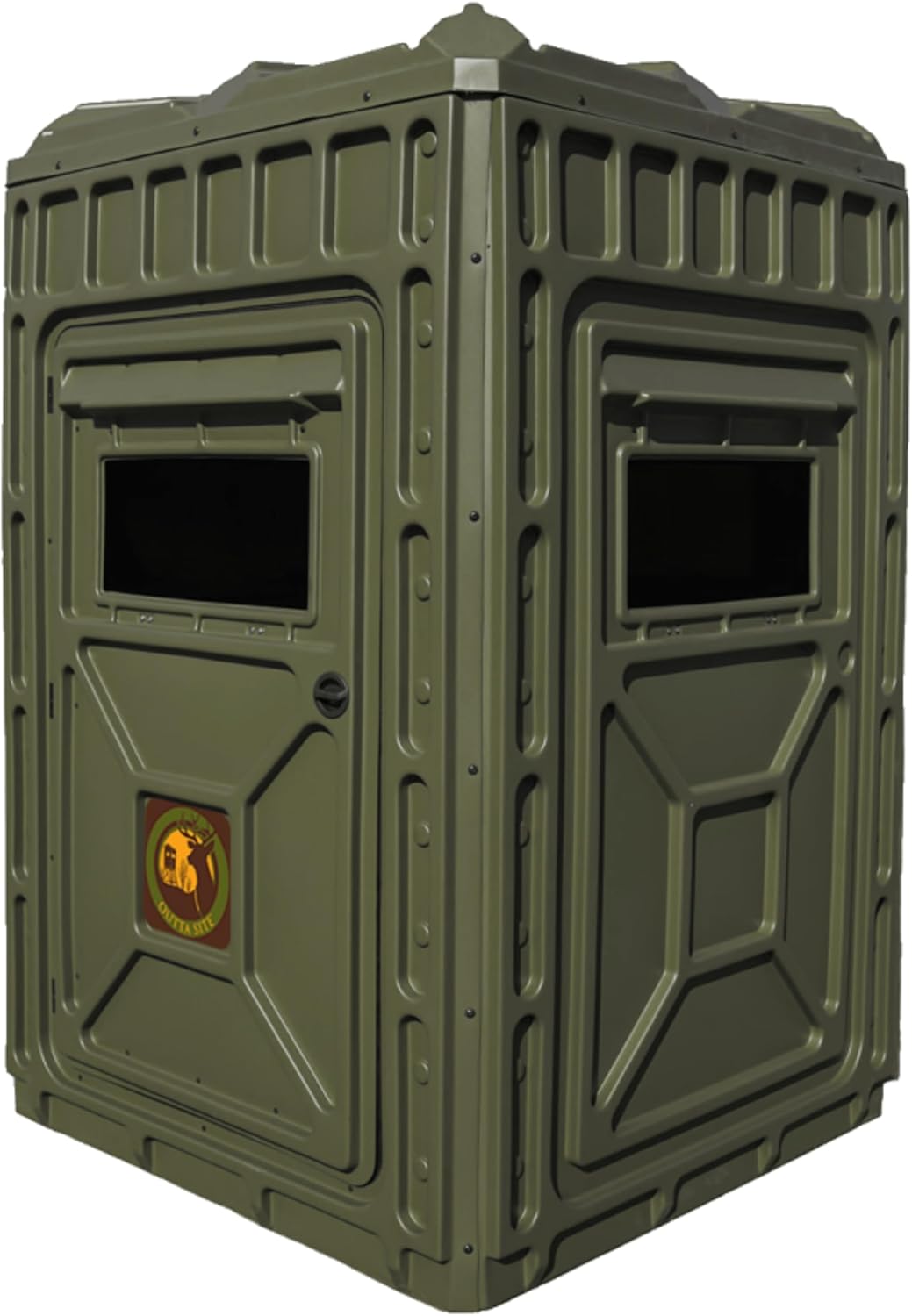
Outta Site Habitat 5-Sided Blind:
Made from UV-stable high-density polyethylene that’s tough enough to keep rain and snow out all season. Molded window awnings keep water off the glass, and the interior is roomy for extra gear or a friend.
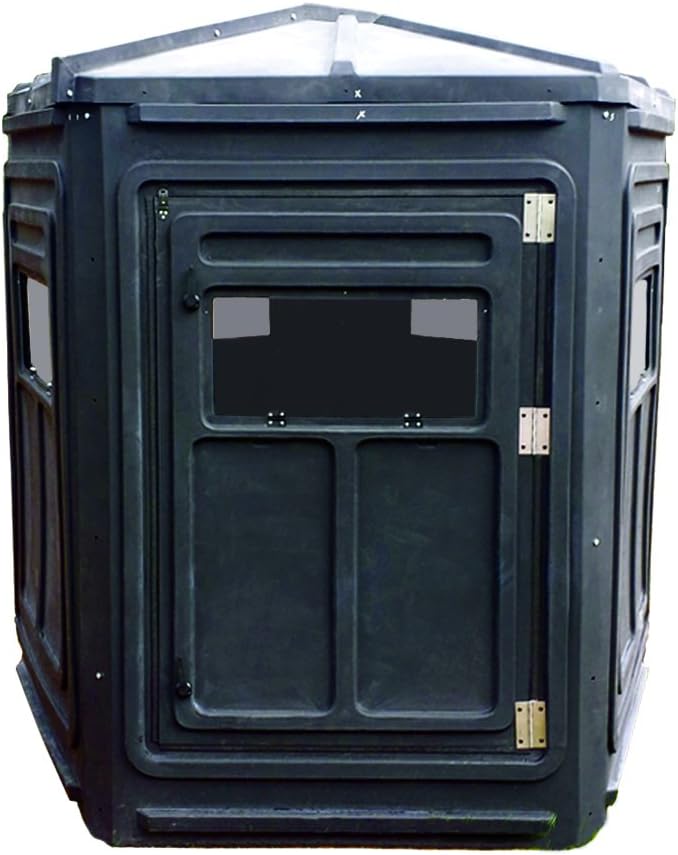
Booner 5-Panel Dagger HW:
Also built from HDPE, this blind handles harsh conditions and can be left in place all year. Tinted, shatter-resistant plexiglass windows offer solid visibility in all directions.
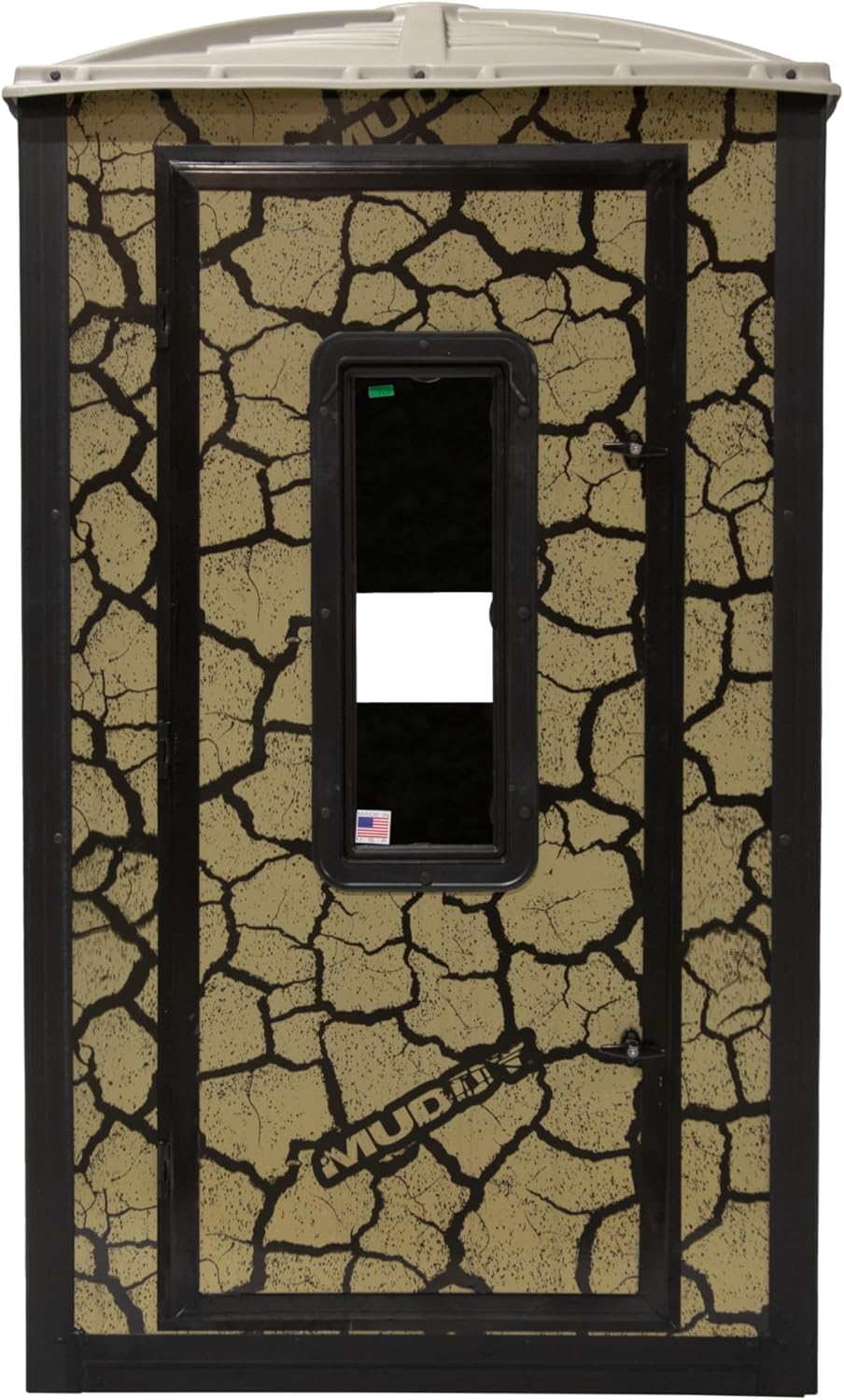
Muddy Gunner Box Blind:
NEW steel wall construction for improved longevity. NEW cracked mud exterior pattern breaks up the blind’s outline, ensuring you stay concealed. Therma-Tek wall panel technology provides year-round thermal, scent, and noise control.
A hardsided blind might be a pain to move, but it’s my first pick for a spot I return to each year. This is especially true in states where autumn rains can last for days, and I want a reliable, dry shelter to escape the elements.
Best Waterproof Ground Blinds for Elk Hunters
Not every elk hunting plan involves setting up a permanent blind. When I want to hike in, change locations quickly, or just avoid the commitment of hauling a massive shell, water-resistant fabric blinds are my go-to. Here are some top fabric models that keep me dry and stay mobile:
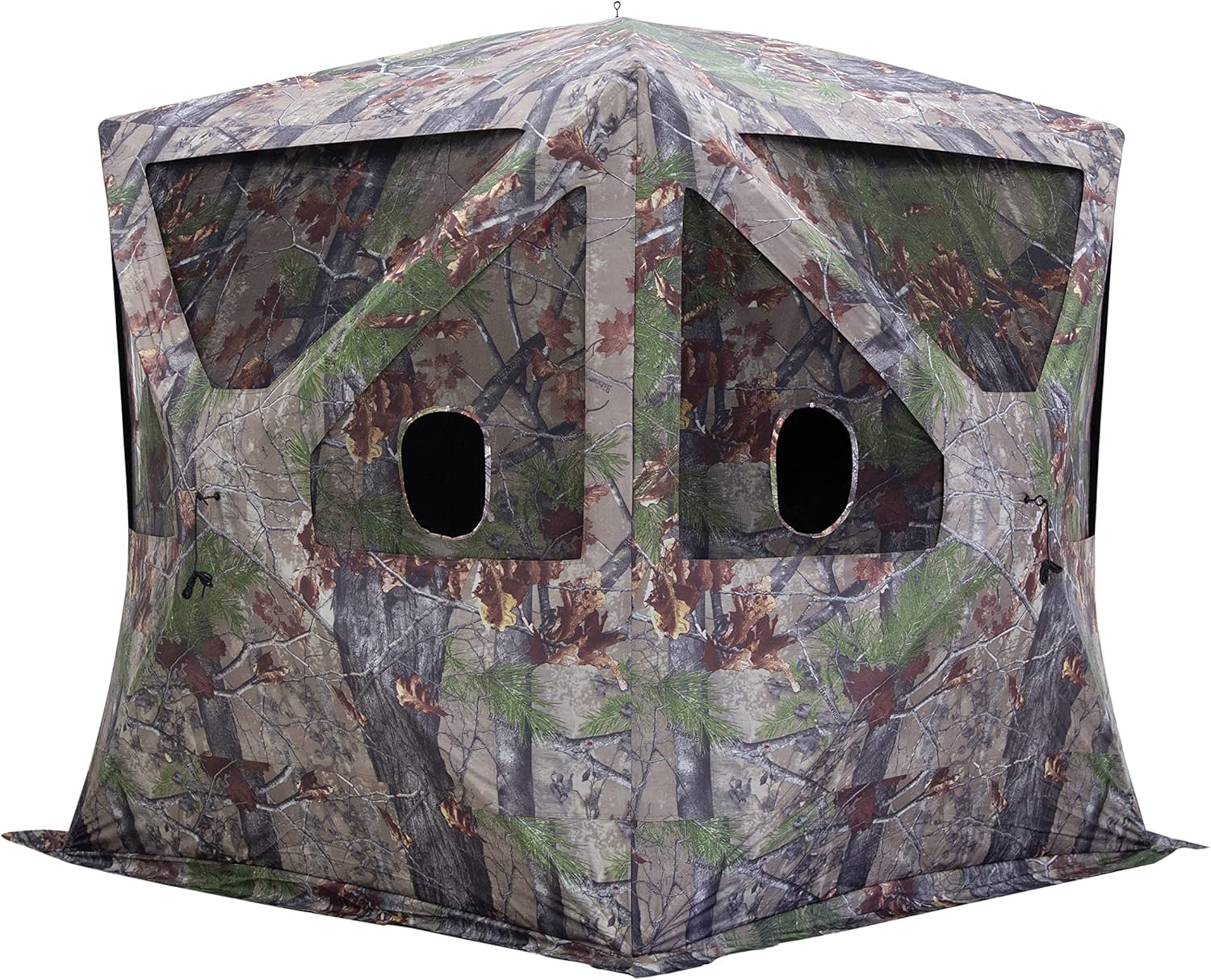
Barronett Big Cat Heavy Duty Blind:
This blind uses tightly woven 600-denier polyester with waterproof treatment. I find it handles ongoing rain and has enough space to stash my pack and weapon without cramping me.
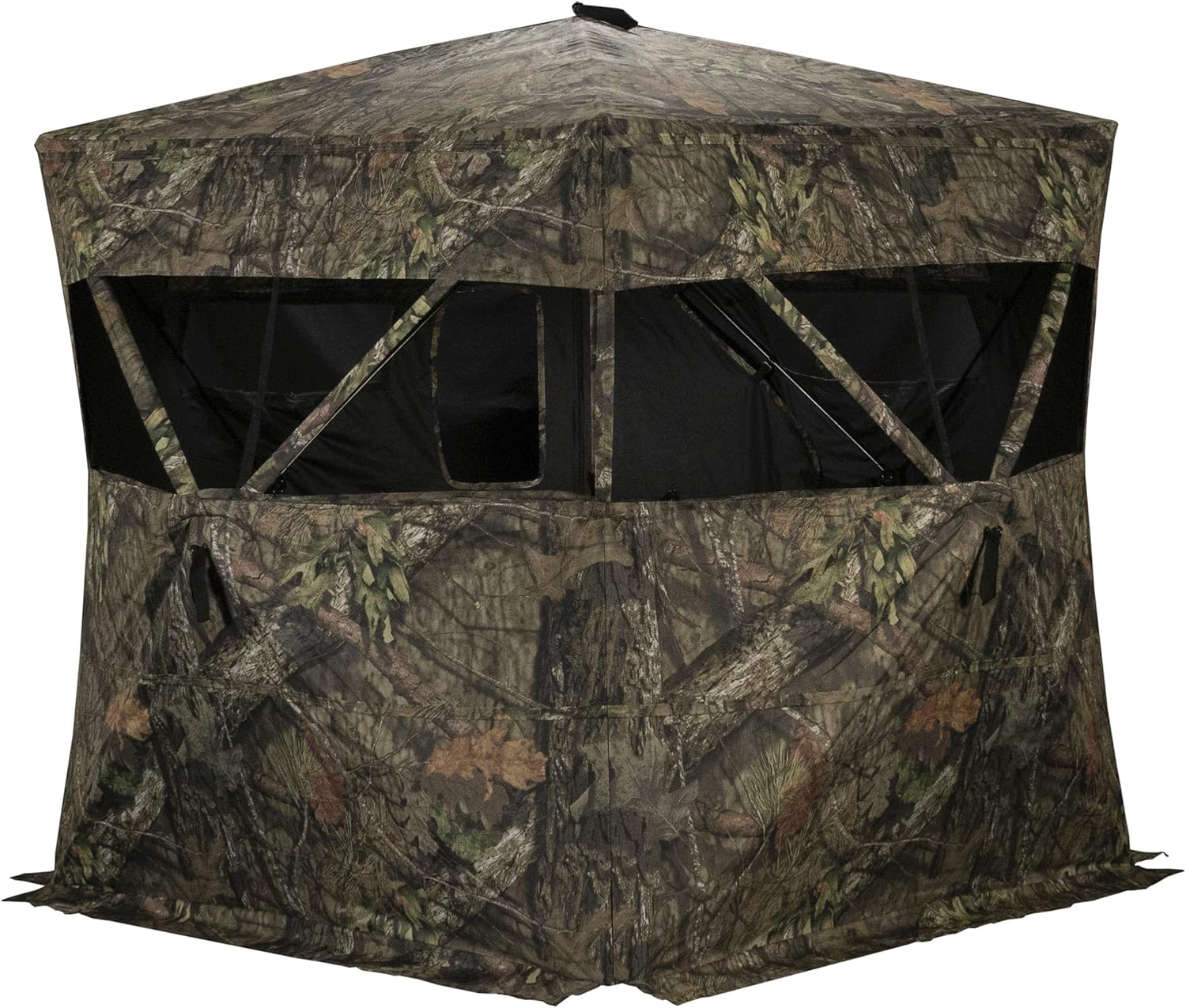
Rhino Blinds (R200 and up):
Rhino’s higher-end blinds use treated polyester and reinforced hubs. Their zipperless doors help minimize noise when I enter or exit, and the overall build keeps water out nicely.
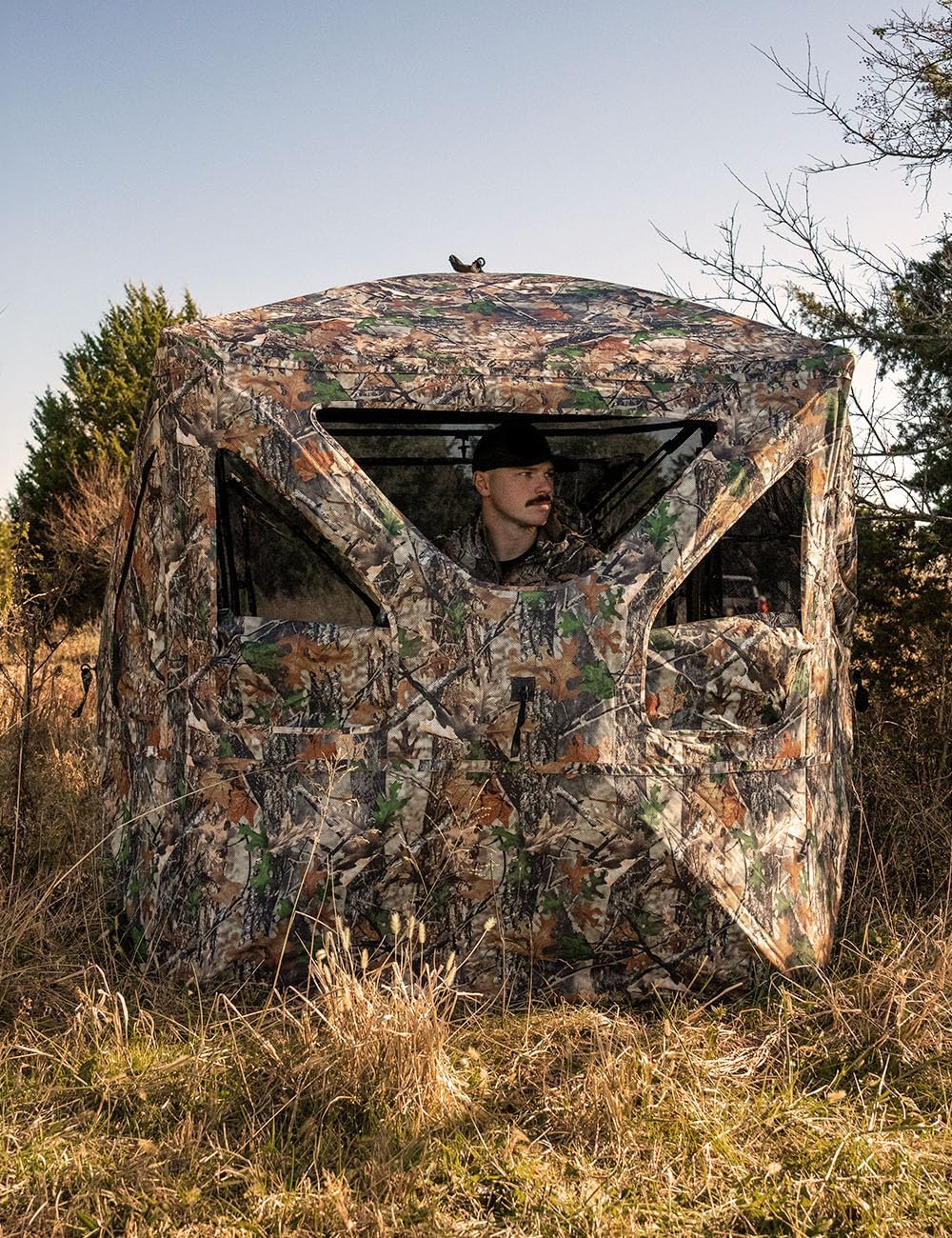
TideWe See Through Hunting Blind:
Made with 300-denier polyester to block out water. The seethrough mesh panels are handy for watching elk approach while staying hidden, and the pop-up frame is easy to set up after a long walk.

Muddy Prevue Evo Max:
Its 150-denier tackle fabric is water-resistant and includes a black backing for extra darkness. It’s easy to carry for one-person setups and helps me stay stealthy in brushy terrain.
With fabric blinds, adding a waterproofing spray before each season is something I always do for extra peace of mind, especially when older seams start showing age. I’ve found that repeating this every year helps extend the life of the blind and boost its performance on really wet hunts.
Key Things to Look for in Waterproof Ground Blinds
Over time, there are certain things I’ve learned to look out for when choosing waterproof ground blinds. These details can mean the difference between an easy day and fighting leaks for hours on end.
- Material Quality: I always go for high-denier fabric (300D or 600D) or HDPE/fiberglass in hardsided blinds. Thin or untreated fabrics don’t hold up to ongoing moisture or cold, and can start leaking quickly.
- Seams and Zippers: Sealed, covered seams and protected zippers block water entry. On fabric blinds, I check for tape or seam guards to keep rain out. Robust, rust-proof zippers last longer, especially after wet trips, where cheap ones can start rusting right away.
- Ventilation: A little ventilation is really important for wet climates. If not, my gear and clothes end up clammy and uncomfortable. Mesh windows or adjustable flaps help with airflow so the inside stays comfortable without giving away my scent.
- Ground Skirt: Skirts that lie flat or anchor with stakes keep water from running inside. Some even let me pile brush or snow on the outside edge for extra protection against runoff.
- Ease of Setup: When it’s raining, spending less time setting up counts. Compact pop-up designs or easylatch panels get me undercover quickly and help avoid getting soaked during the quick setup process.
- Quiet Operation: Wet weather makes elk nervous, so zippers, doors, and windows that open quietly are super important for close-range shots. Velcro is usually too loud, so zipperless or magnet designs are my preference for keeping things quiet.
Checking real hunter reviews for each model helps confirm which blinds really stay dry during all-day downpours and which might only work for light drizzle.
Overcoming Common Challenges When Using Ground Blinds in Wet Weather
While a waterproof blind keeps most rain out, there’s more to staying dry and comfortable during extended hunts in wet weather. Here’s how I handle some typical issues that come up during multi-day elk adventures:
- Condensation: In cold, damp weather, moisture builds up inside. This is especially true when I’m in and out or boiling coffee to stay warm. Propping windows open a crack helps reduce fogging on chilly mornings and keeps the air a bit fresher.
- Water Pooling at the Base: Water can pool under my blind in heavy rain or snowmelt. Placing the blind on slightly raised ground and using the ground skirt helps, but I sometimes tuck a tarp under my chair for a little extra dryness. This trick has saved me from soggy feet plenty of times!
- Keeping Gear Dry: Even a waterproof blind has weak spots. I stash electronics and dry clothes in waterproof bags and keep my weapon cased unless I’m set for a shot. Small leak? I duct tape the seam for the day and note it for repair at home for next time.
- Managing Scent in Damp Air: Wet conditions can push scent down. I use blinds with good airflow and always try to set up with the wind in mind. When possible, I air out the blind at home so no musty or synthetic odors build up for the first day of the hunt.
Real World Use: Waterproof Ground Blinds in Action
I still remember hiking out to a stand of aspens one October morning when rain suddenly poured down. With my fabric blind, I was able to set up in less than a minute, and except for my boots, I stayed dry all day. That experience sold me on carrying a compact, water-resistant blind whenever wet weather is in the forecast.
Friends who hunt private land with hardsided blinds rarely worry about daily weather changes. However, for me and other mobile hunters who move with the herds, a reliable water-resistant blind makes it much easier to stay focused and make the shot count even when the weather turns nasty with little warning.
Frequently Asked Questions
Here are some common questions I see from elk hunters interested in waterproof ground blinds:
What waterproofing features are the most important for ground blinds in wet conditions?
For me, it’s a combination of high-denier, waterproof-treated fabric, sealed seams, and a protected zipper or magnet closure. For permanent setups, I look for hardsided construction with molded edges and overhanging window lips for extra defense against water leaks.
Can I make my current ground blind more waterproof?
Yes. I use commercial waterproof spray on both fabric and seams and make sure to check for any pinholes or damage before the season starts. Adding a ground tarp and repairing old seals with tape helps extend the life of my blind and gives a boost to its waterproof qualities.
How much wind can a waterproof fabric blind handle?
While they can handle steady rain, it’s really important to stake down any popup blind and pick a protected location. Heavy winds can still tip or tear a blind, especially if the ground is muddy or soft, so always check your tie downs before sitting inside during a storm.
Getting the Most From Your Waterproof Elk Hunting Blind
A solid waterproof ground blind is more than a piece of comfort gear. For me, it’s a vital part of hunting in rough, wet country. Spending a little extra time choosing the right blind means I can stay focused, alert, and ready for action no matter what the sky throws at me.
Whether I’m planning to haul in a lightweight popup or setting up a heavy-duty permanent shelter, knowing my options and gear limitations helps my hunts go smoothly. Staying dry often means staying in the game longer, and that can make all the difference when elk finally show up in the pouring rain.
Most Recent Articles:
- 14 Tips And Tactics For Public Land Mule Deer Hunting

- 6 Features of Waterproof Ground Blinds For Wet-condition Elk Hunting
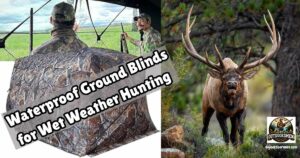
- 4 of the Best DIY Elk Hunting Areas In Colorado

- 8 Tips for Choosing the Best DIY Elk Hunting States
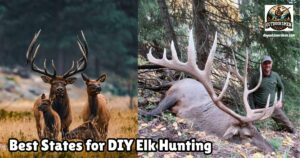
- 5 Hunting Gear Packing List Essentials For DIY Trips
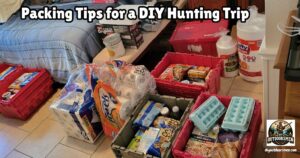
- 7 Tips For Hunting The Elk Migration
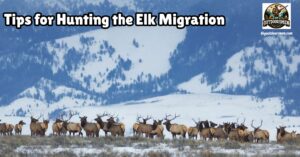
As always, stay safe, enjoy the journey, and please try to leave it cleaner than you found it. If you have any comments, questions, ideas, or suggestions, please leave them in the comment section below, and I’ll get back to you ASAP. You can follow us on YouTube: Man Art Creations for videos of our DIY Adventures.
P.S. Thanks so much for checking out our blog; we really appreciate it. Just so you know, we may receive a commission if you click on some of the links that appear on our site. This helps us keep our content free and up-to-date for everyone. We appreciate your support!
